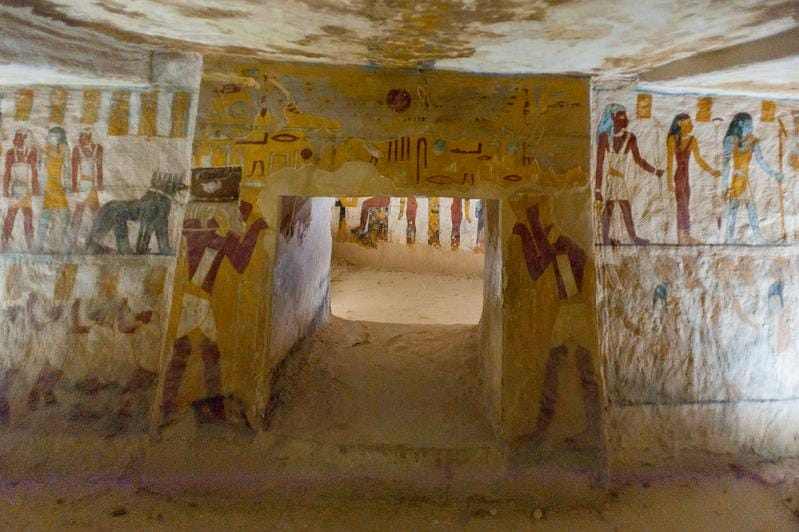Archeological Sites of Al-Bahariyya
Al-Bahariyya used to be a sleepy community known for its hot springs and date palms, until a major archaeological discovery made by the famous Egyptian archaeologist Zahi Hawass put Al-Bahariyya on the map. Thanks to the discovery of the Valley of Golden Mummies, tourists from around the world who are interested in more than just desert adventure have put Al-Bahariyya on their itineraries.
The Valley of the Golden Mummies
This is one of the most significant Graeco-Roman burial sites in Egypt and the largest cache of mummies ever found in the country. The tombs found in this remarkable site hold a treasure trove of information on the history of the area, which was once the center of a thriving trade route during the Graeco-Roman period from 332 BC to 641. The once-wealthy community was also famous in the ancient world for its wine made from fermented dates.
In an area that covers 10 sqm, there are thousands of mummies, astonishingly decorated with a fusion of traditional Egyptian and Graeco-Roman cultural motifs. Many of these mummies were adorned with gilded, funerary masks that portray facial characteristics of the deceased—giving the site its name. The tombs yielded a number of other discoveries, namely countless artifacts that include statues, pottery, jewelry, and coins.
A visit to the site will not only enhance your understanding of the significance of burial rituals in Egypt but also punctuate how new dynasties added their own trademark on cherished ancient rituals.
While you’re there, make sure to visit the museum if you want to see the Golden Mummies face-to-face.

